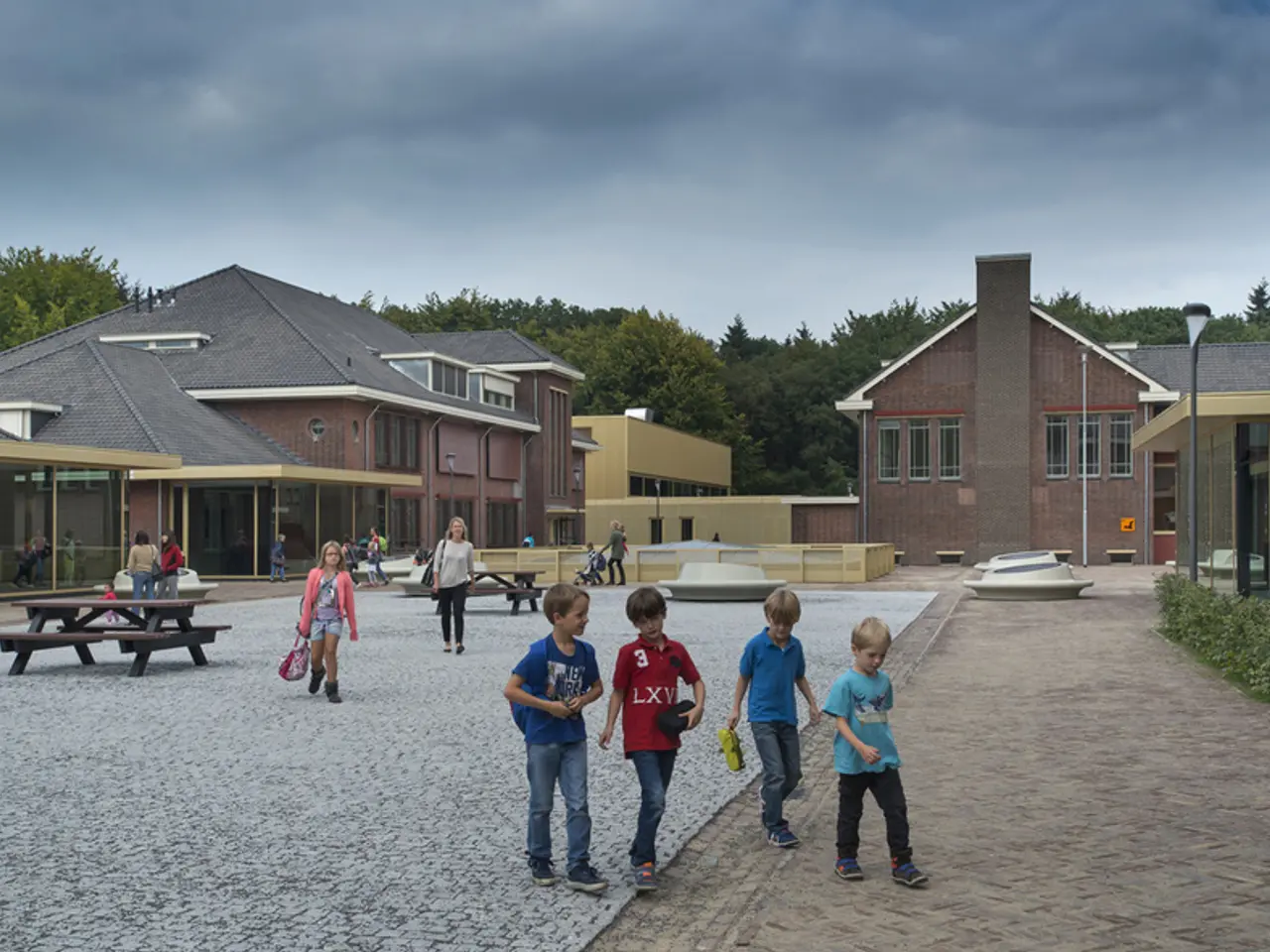Ecological Systems Perspective: Bronfenbrenner's Exosystem Concept
Understanding the Exosystem: Indirect Influences on Child Development in a Digital Age
The concept of the 'exosystem' in Urie Bronfenbrenner's bioecological model highlights the environmental contexts that indirectly impact a child's development. These contexts encompass outside institutions and systems, such as a parent's workplace, community services, and broader social networks, that affect the child's immediate environment, typically the microsystem (family, school, peers).
The significance of the exosystem lies in its indirect impact. Changes or events in the exosystem can shape the conditions and experiences within the child’s microsystem. For example, a parent’s job loss or stressful work environment may influence family dynamics, affecting the child's development even though the child is not directly involved in the workplace.
In today's digital age, technological advancements have transformed the exosystem by expanding and altering the types of institutions and social networks influencing children indirectly. Digital communication technologies enable parents to work remotely or connect with social services and communities online, changing the nature of the exosystem’s influence. Education systems and health services increasingly depend on technology, creating new channels whereby digital environments affect children indirectly through adult relationships and institutional processes.
While the research on technology's impact on the exosystem is still evolving, the conceptual framework implies that as external social institutions evolve with technology, so too does their role in child development. The exosystem now includes not only traditional offline institutions but also digital platforms and infrastructures that mediate access to resources, social support, and information relevant to children’s lives.
Educators, parents, and community organizations can strive to understand these indirect influences and advocate for policies that support both children and their families. This might include access to mental health services, nutritious school meals, and transportation assistance. Collaboration with community organizations can extend the school's reach, connecting families with essential resources and services. Parents can also connect with local community organizations that offer resources and support, such as after-school programs, parent support groups, and early childhood intervention services.
As we navigate this digital era, it is crucial to consider how technology shapes proximal processes, the key interactions driving development, including online interactions, exposure to curated content, and digital communication patterns. This understanding aligns with Bronfenbrenner’s emphasis on the complexity and interconnectedness of multiple environmental layers in his bioecological model.
- The job loss or stressful work environment of a parent can have an indirect impact on a child's mental health, altering family dynamics and thus affecting child development.
- As children's development is influenced by the exosystem, understanding its impact is crucial in today's digital age, where technological advancements have expanded the types of institutions shaping their lives.
- Changes in the exosystem, such as the increased dependence of education systems and health services on technology, can bring about new ways in which the digital environment affects child development indirectly.
- Research on technology's impact on the exosystem is still developing, but it implies that the implications of this digital evolution for children's lives should not be overlooked as external social institutions adapt to new technology.
- To foster positive child development in a digital age, educators, parents, and community organizations can work towards advocating policies that support families with access to mental health services, nutritious school meals, and transportation assistance.
- By collaborating with community organizations, schools can connect families with essential resources and services that may include after-school programs, parent support groups, and early childhood intervention services.
- Parents can also seek support from local community organizations to access resources like after-school programs and parent support groups aimed at helping children navigate their cognitive development and education-and-self-development in the digital age.




